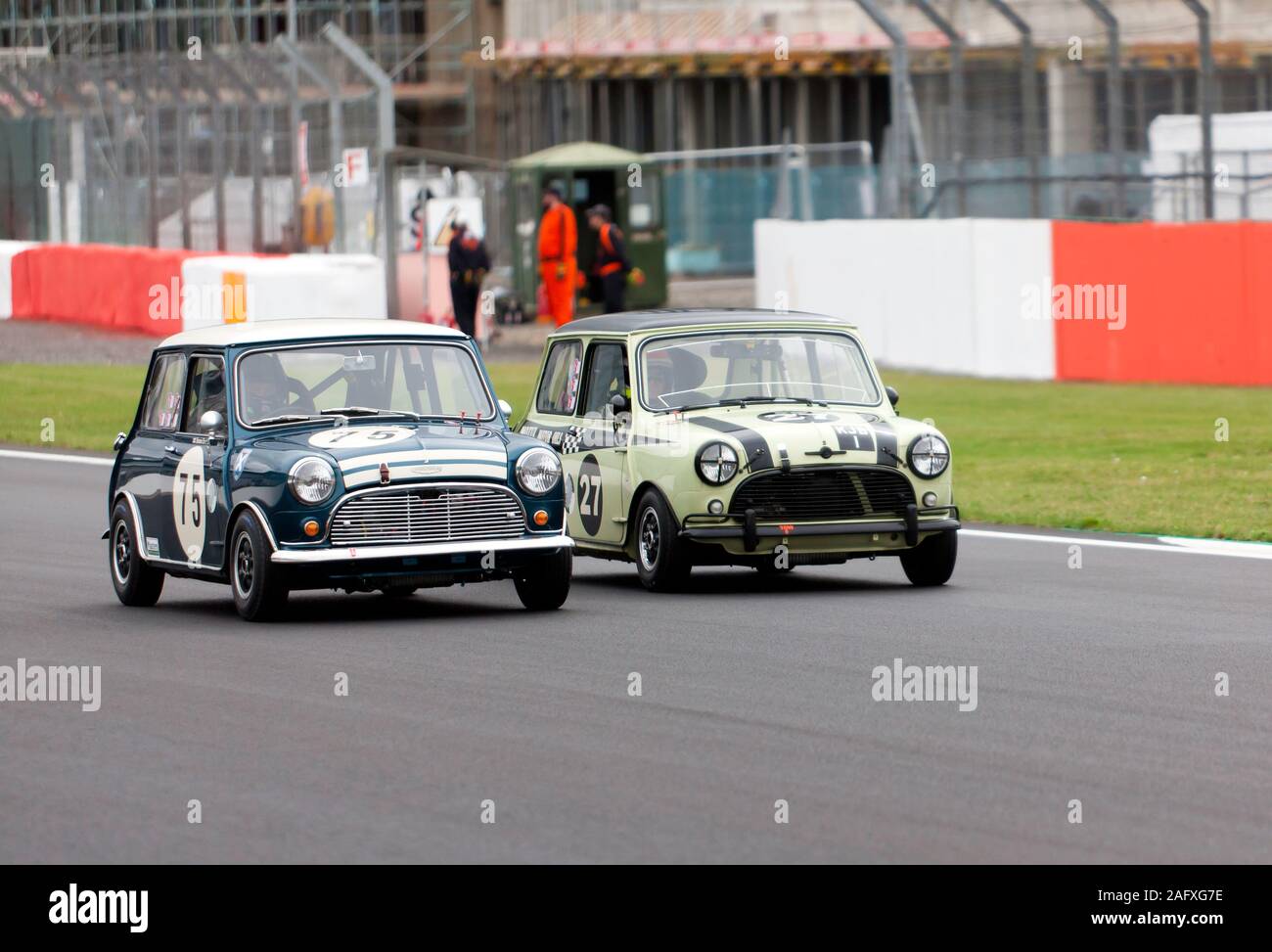Two Austin Mini Cooper S's, side by side, down the International Pits Straight during the Transatlantic Trophy for Pre '66 Touring Cars

Image details
Contributor:
John Gaffen / Alamy Stock PhotoImage ID:
2AFXG7EFile size:
34.6 MB (1 MB Compressed download)Releases:
Model - no | Property - noDo I need a release?Dimensions:
4217 x 2867 px | 35.7 x 24.3 cm | 14.1 x 9.6 inches | 300dpiDate taken:
27 July 2019Location:
Silverstone Circuit, Towcester, Northamptonshire, NN12 8TNMore information:
Issigonis' friend John Cooper, owner of the Cooper Car Company and designer and builder of Formula One, saw the potential of the Mini for competition. Issigonis was initially reluctant to see the Mini in the role of a performance car, but after John Cooper appealed to BMC management, the two men collaborated to create the Mini Cooper. The Austin Mini Cooper and Morris Mini Cooper debuted in September 1961. The 848 cc (51.7 cu in) engine from the Morris Mini-Minor was given a longer stroke to increase capacity to 997 cc (60.8 cu in) increasing power from 34 to 55 bhp (25 to 41 kW). The car featured a race-tuned engine, twin SU carburettors, a closer-ratio gearbox and front disc brakes, uncommon at the time in a small car. One thousand units of this version were commissioned by management, intended for and designed to meet the homologation rules of Group 2 rally racing. The 997 cc engine was replaced by a shorter stroke 998 cc unit in 1964. In 1962, Rhodesian John Love became the first non-British racing driver to win the British Saloon Car Championship driving a Mini Cooper. Timo Mäkinen and Mini Cooper S on their way to the first of a hat-trick of wins in the 1000 Lakes Rally in Finland A more powerful Mini Cooper, dubbed the "S", was developed in tandem and released in 1963. Featuring a 1071 cc engine with a 70.61 mm bore and nitrided steel crankshaft and strengthened bottom end to allow further tuning; and larger servo-assisted disc brakes, 4, 030 Cooper S cars were produced and sold until the model was updated in August 1964. Cooper also produced two S models specifically for circuit racing in the under 1, 000 cc and under 1, 300 cc classes respectively, rated at 970 cc (59 cu in) and a 1, 275 cc (77.8 cu in), both had a 70.61 mm (2.780 in) bore and both were also offered to the public. The smaller-engine model was not well received, and only 963 had been built when the model was discontinued in 1965. The 1, 275 cc Cooper S models continued in pro